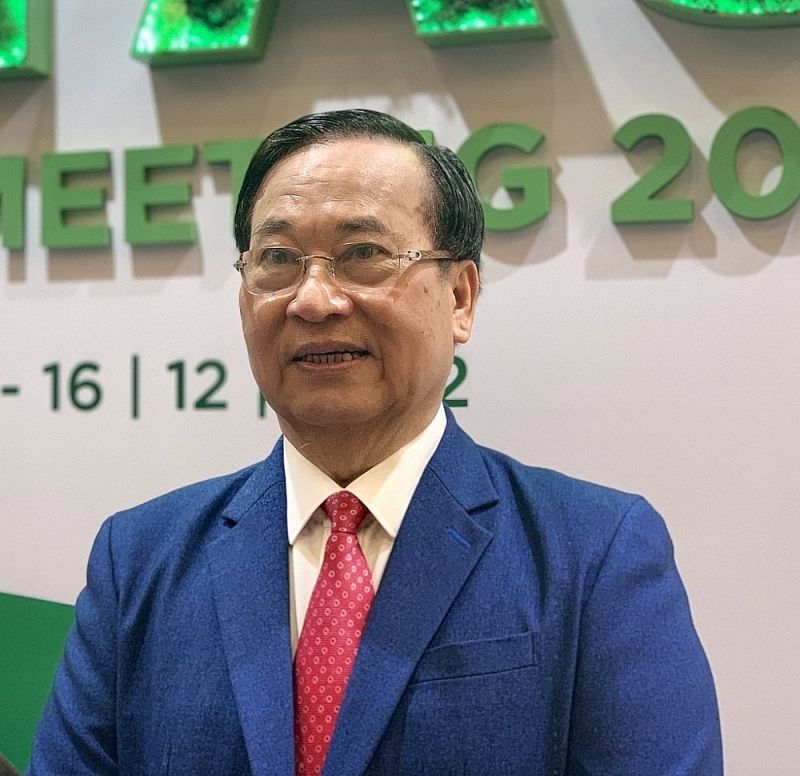 |
| Vu Duc Giang, Chairman of Vietnam Textile & Apparel Association |
After signs of recovery at the end of 2023, how is the export situation of Vietnam’s textile and garment industry since the beginning of 2024?
In the first two months of 2024, although having 15-day celebration of the Lunar New Year, Vietnam’s textile and garment export turnover still reached US$6.2 billion and is estimated to reach about US$9.5 billion in the first quarter, a growth of about US$6.2 billion USD, an increase of 9.62 percent compared to the same period in 2023.
In 2024, Vietnam’s textile and garment industry sets an export target of about US$44 billion. This target is based on the fact that orders in markets have begun to return at a relatively good level compared to the same period last year. In addition, Vietnam’s textile and garment industry is also adapting very quickly in its greening and sustainable development strategy in line with the requirements of major markets.
In particular, the proportion of invested factories that meet the standards of rating organizations is increasing. This helps promote the adaptability of Vietnamese textiles and garments to the import standards of Europe and some countries such as the US, Japan, South Korea…
Which markets has the recovery been recorded, sir?
The US market is recovering relatively well, about 3-4 percent compared to the same period in 2023. This is a very positive signal because US is a market that accounts for up to 44-45 percent of the total export turnover of Vietnam’s textiles and garments. Following is Japanese market, especially the Uniqlo brand which is growing very quickly. The Korean market and other ASEAN and Asian countries are also recovering positively.
In 2023, Vietnamese textiles and garments exported to 104 global markets. Among them, Asian countries are also important target markets and have had very good growth. Currently, exports to ASEAN and Asian markets in general are increasing by about 6 percent. In addition, last year, the textile and garment industry also had many solutions to promote exports to African and Middle Eastern markets and also achieved positive results.
This shows the strategy that the Vietnam Textile and Apparel Association set for businesses in terms of diversifying markets, diversifying partners, customers and diversifying products has been effective.
Recently, the Vietnam Textile and Apparel Association has actively called for investment in the supply shortage. What results have been achieved so far, sir?
A very positive thing is that FDI investment in the fourth quarter of 2023 and in the first two months of 2024 in the fields of weaving, dyeing, and sewing has increased very quickly, only the fiber industry is slowing down. Many raw material factories, factories in producing threads, zippers, copper buttons, plastic buttons… of investors from the US, Japan, China, Taiwan, Hong Kong… have been invested in Vietnam on a world-leading scale.
For example, SAB Group (China) has invested in a zipper factory in Bim Son Industrial Park (Thanh Hoa) with the leading scale in the group’s factory system. Similarly, the world’s leading zipper company YKK has also invested in a second factory in Vietnam, located in Dong Van Industrial Park (Ha Nam) with a larger scale and more morden technology than the last one in Dong Nai.
a much more modern scale and technology than the previous factory. there in Dong Nai. Germany’s Amann thread factory in Vietnam is also one of the number one thread manufacturing factories in the world… Currently, a series of European and American thread factories have been invested in Vietnam.
In my point of view, the series of Free Trade Agreements of Vietnam are the driving force to attract domestic investors as well as FDI investors to invest in the supply shortage of Vietnam’s textile and garment industry. This is one of the factors that helps gradually reduce dependence on external raw materials. This will also help Vietnam’s textile and garment industry solve some key problems: faster domestic production time, lower transportation costs, more competitive prices and we can be proactively in source domestic raw materials to develop the fashion industry.
In the future, the Vietnam Textile and Apparel Association will continue to call for investment in the supply shortage for the following years’ goals. In fact, we cannot immediately appeal to all fields. This investment process will entail shifts from other countries to Vietnam and this will help improve our ability to adapt to the global market.
Thank you, sir!
